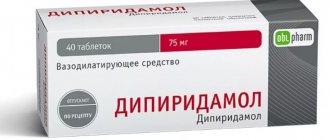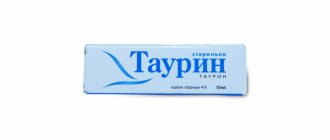Drugs and their types
Calcium antagonists, or calcium channel blockers (CCBs), are a large group of drugs with the same mechanism of action, but differing in composition, structure, and some properties (absorption, excretion, effect on heart function). Another correct name for the group is slow calcium channel blockers.
The drugs described belong to the first line, they are used as antihypertensive drugs.
Usually, in case of arterial hypertension, these drugs normalize the blood pressure level, and if they are ineffective, they are replaced or combined with other drugs (beta-blockers, ACE inhibitors). It is preferable to treat people with them in old age, in the presence of peripheral blood flow disorders, kidney damage, and angina pectoris. There are several groups of calcium antagonists, here are the main ones:
| Group | Example of a drug | Price, rubles |
| Phenylalkylamines | Verapamil | 45 |
| Dihydropyridine | Nifedipine | 35 |
| Benzothiazepines | Clentiazem | 70 |
| Diphenylpiperazines | Cinnarizine | 50 |
Also, all medications can be divided into those that increase heart rate or those that decrease it (the latter mechanism resembles beta-blockers). Based on the time of development, four generations of drugs are distinguished. The first includes Nifedipine, the second - Nimodipine, the third - Amlodipine, and the latest generation of drugs includes Cilnidipine.
Nifedipine group - medications
Calcium ions play an important role throughout the body. Calcium is needed for bones, helps heal them during fractures, along with magnesium helps with leg cramps. The element also controls heart contractions and is responsible for the normal function of myocytes. If there is an excess of an element or if its removal is disrupted, a failure of the pumping function and an increase in pressure occur. BKK helps solve the problem.
Most often among the list of drugs, doctors prescribe dihydropyridine derivatives, which are otherwise called the Nifedipine group. The latter is the first CCB developed that has a positive effect on blood vessels. It has the following effects:
- slows down the penetration of calcium into cardiomyocytes and smooth muscle fibers of arteries;
- gives antianginal, hypotensive effect;
- reduces the tone of the arteries without affecting the tone of the veins;
- expands the lumen of peripheral and coronary vessels;
- reduces oxygen demand in the myocardium.
The drugs do not affect heart rhythms and do not inhibit conduction. In patients with heart failure, diabetes mellitus, and those on hemodialysis, the drug is used only in a hospital setting. Main indications:
- relief of angina attacks;
- hypertension;
- Raynaud's disease;
- hypertensive crisis.
More expensive drugs have been developed with the same medicinal substance, differing in the degree of purification, type of release and manufacturer's brand - Nifecard, Cordaflex, Kordipin, Corinfar, Calcigard, their cost is 200-600 rubles. The group of dihydropyridines also includes Nimodipine (Nimotop), Amlodipine (Amlovas, Norvasc).
Verapamil Group - representatives
Verapamil derivatives belong to the phenylalkylamine group; they have a pronounced effect on conductivity in the myocardium. Their distinctive feature is their effect on the sinus node - the pacemaker, since the work of cell membranes in it is due to the presence of calcium ions.
Verapamil has no effect on the ventricular conduction system - depolarization there depends on sodium ions.
Verapamil has a strong antianginal effect - it manifests itself as a result of the direct action of the drug, as well as due to its effect on the tone of the arteries in the periphery. The drug is prescribed as an additional remedy for cardiomyopathy, as it reduces the tone of the myocardial walls. Other indications:
- supraventricular arrhythmias;
- stable angina without vasospasm;
- paroxysmal and other types of tachycardia;
- tachyarrhythmia atrial fibrillation;
- atrial flutter;
- supraventricular extrasystole;
- hypertension, crisis conditions;
- pulmonary hypertension.
There are also a number of other medicines based on veropamil - Isoptin (440 rubles), Tarka (760 rubles). The second generation of drugs in this group is represented by gallopamil and a drug based on it, called Procorum.
Diltiazem and its analogues
Benzodiazepines have a weaker effect on blood vessels and the heart than Nifedipine. They are considered to occupy a middle position between Verapamil and Nifedinine and belong to third generation drugs. Distinctive features:
- moderate suppression of the sinus node;
- moderate decrease in atrioventricular node function;
- mild reduction in blood pressure.
The main medicine of the group is Diltiazem (150 rubles). It has antianginal, hypotensive, antiarrhythmic properties, reduces myocardial contractility, lowers heart rate, increases coronary blood flow and reduces the heart's need for oxygen. The drug also promotes an increase in renal and cerebral blood flow. After taking the medicine, the amount of calcium ions in the myocardial cells decreases, which provides the effects described above.
Diltiazem is available in the form of regular tablets and a long-acting formulation (Diltiazem SR). Most often it is prescribed for angina pectoris combined with arterial hypertension, for ischemic heart disease, and Prinzmetal's angina. It is undesirable to combine the drug with beta blockers, as this may increase the negative effect on the conduction system of the heart.
Cinnarizine group
This drug and its analogues have slightly different indications for use. They dilate, for the most part, the blood vessels of the brain, and have an indirect and insignificant effect on the heart.
Cinnarizine can be used for headaches and migraines - it relieves vascular spasm.
Indications for treatment with Cinnarizine include dizziness, memory loss, tinnitus, and impaired attention. The drug is indicated in complex therapy for Meniere's disease, labyrinthitis, nystagmus of various etiologies. Other indications:
- seasickness;
- cerebral circulation disorders (chronic);
- peripheral circulation failures;
- Raynaud's disease;
- acrocyanosis;
- ulcers on the limbs with diabetes, varicose veins.
Cinnarizine is also included in the drug Stugeron, and in combination with piracetam - in the drug Fescetam, Omaron. The second generation of the group is represented by the active substance flunarizine, which provided the basis for the creation of a number of drugs for migraine.
Modern calcium antagonists
The fourth generation of drugs includes a rather limited list. The list of drugs of the latest generation of calcium channel blockers includes Cilnidipine. The drug belongs to the group of dihydropyridines, therefore it is most widely prescribed for the treatment of arterial hypertension and coronary artery disease. The drug is highly selective for slow calcium channels.
Cilnidipine is a promising drug that was developed by Japanese scientists in the 2000s. It is most widely used in Japan; in Russia it is represented by the original and various generics. The advantages of the drug are:
- safety for patients;
- high effectiveness against hypertension;
- no adverse effects on heart rate, pulse;
- improving the properties of arterial walls;
- suitability for use in old age.
The medicine helps against stress hypertension, with morning high blood pressure. It also has a nephroprotective effect and can be used in patients with diabetes. In case of coronary artery disease, the drug provides an additional effect in the form of improving the lipid profile.
Effects of calcium channel blockers on renovascular hemodynamics
CCBs have a positive effect on renal hemodynamics. They improve renal circulation, despite the decrease in perfusion pressure as a result of normalization of blood pressure. This effect is realized through a direct effect on vascular tone and an indirect effect - blocking the vasoconstrictor effect of endothelin-1 and angiotensin II. CCBs improve natriuresis and practically do not change the levels of K– and Mg2+ in blood plasma [31].
Some BCCs have an antisclerotic effect on the renal parenchyma. This effect is realized by inhibiting the influence of growth factors and reducing the proliferation of fibroblasts. Among the CCBs, lercanidipine, felodipine and diltiazem have an antisclerotic effect. Long-term use of CCBs (especially lercanidipine and diltiazem) reduces proteinuria. Thus, the DIAL study demonstrated the ability of lercanidipine to reduce albuminuria, which has not yet been proven for other dihydropyridine derivatives.
In recent years, it has been established that long-acting benzothiazepine derivatives exhibit a greater antiproteinuric effect than dihydropyridine derivatives. Diltiazem has been used successfully in dialysis patients, especially in combination with an ACE inhibitor. The use of diltiazem may prolong the survival of the transplanted kidney [35].
Contraindications and side effects
Most calcium antagonists are prohibited to take during the acute period of myocardial infarction; if these contraindications are neglected, the risk of cardiac death greatly increases. Also among the prohibitions on therapy are:
- pre-infarction condition, unstable angina;
- arterial hypotension;
- tachycardia - for a group of drugs with nifedipine;
- bradycardia - for a group of drugs with verapamil;
- acute heart failure;
- age up to 12-18 years, depending on the drug group and the specific drug;
- lactation, pregnancy;
- the last stages of renal and liver failure (the ban is not relevant for all medications).
Each remedy has side effects, most often they include headache, fever, and severe drop in blood pressure. A number of patients experience peripheral edema and the development of tachycardia. Many medications, when taken for a long time, cause constipation, increased liver function tests, and skin rashes. Cinnarizine may increase the symptoms of Parkinson's disease.
Classification by generation
It would be a mistake to think that some remedies are better and others are worse simply based on the generation of the drug.
In fact, the scope of application, the frequency of side effects, and effectiveness differ, which is most likely due to incorrect prescription without an objective and complete assessment of the condition of the patient’s body and his case.
In total, there are 4 generations of BCC:
- 1. Verapamil, Diltiazem. Also Nifedipine. Relatively old drugs are used to treat complex forms of arterial hypertension and cardiac pathologies.
- 2. Nimodipine, Felodipine. They are not fundamentally different from the first, but they are less likely to provoke side effects, and in some patients they give better results of therapy, which is due to the individual characteristics of the body.
- 3. Lercanidipine, Amlodipine. They are considered perhaps the safest in cardiology practice.
- 4. Cilnidipine (Atelek, Duocard and other trade names). This is the most modern remedy, but whether it is considered the most effective is a big question. The drug is definitely highly safe and can block several types of calcium channels, but precise comparative data are not yet sufficient for a final conclusion.
The list of calcium channel blockers of the latest generation is represented by Amoldipine and Lercanidipine; Cilnidipine is not yet used so often.
There is no point in understanding specific names of medications and trying to choose the best one. All means, regardless of generation, solve their own problem. Therefore, there are neither worse nor better options as such.
Rating categories should generally be used with great caution and only within the framework of a specific situation or task.
Attention:
The doctor selects the medication. You can achieve an effect on your own, but only a negative one. It is strictly not recommended to take risks.
Features of application
The key feature of all calcium ion antagonists without exception is the need for prolonged use to achieve a beneficial pharmacological effect.
That is, you shouldn’t expect a miracle from the first appointment. You must wait 3 to 8 days for the effect to take effect.
The above is not always absolutely true, as, for example, in the case of Nifedipine, which in large dosages quite effectively copes with the signs of emergency cardiac conditions.
But in most cases the statement is true. This must be taken into account when planning treatment; it is also not worth interrupting treatment; it will take time to achieve the next pharmaceutical effect.
Contrary to the beliefs of some patients and even doctors, calcium channel blockers are not addictive, the body does not adapt to them, and their effectiveness does not decrease over time.
The next increase in blood pressure or deterioration of the condition is not associated with a change in the effectiveness of the drug and addiction, but with an incorrectly selected treatment regimen: low dosage, inappropriate drug, interruptions in use, etc., for this reason, a deterioration in the condition is observed.
How to take it correctly
The order of administration, dosage, and duration of therapy are determined by the attending physician after examination, establishing the exact picture of the disease according to indications.
General recommendations for taking calcium blockers:
| Name | Recommended dose | Frequency of reception |
| Amlodipine | 2.5 mg gradually increased to 10 mg | 1 time per day |
| Isradipin | 2.5 mg gradually increased to 10 mg | 1 time per day |
| Felodipin | 2.5 mg gradually increased to 10 mg | 2 times a day |
| Nifedipine | 5-10 mg | 4 times a day |
| Verapamil | 40-120 mg | 1 per day |
| Gallopamil | 50 mg | 4 times a day |
Doctors recommend increasing the dosage gradually. Increasing the dosage is permissible up to the maximum values specified in the instructions. When a therapeutic effect is achieved, there is no need to increase the dose. Medicines are prescribed by the attending physician according to indications after examination.
Any medications for hypertension can only be taken as prescribed by a doctor.









